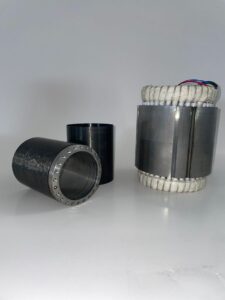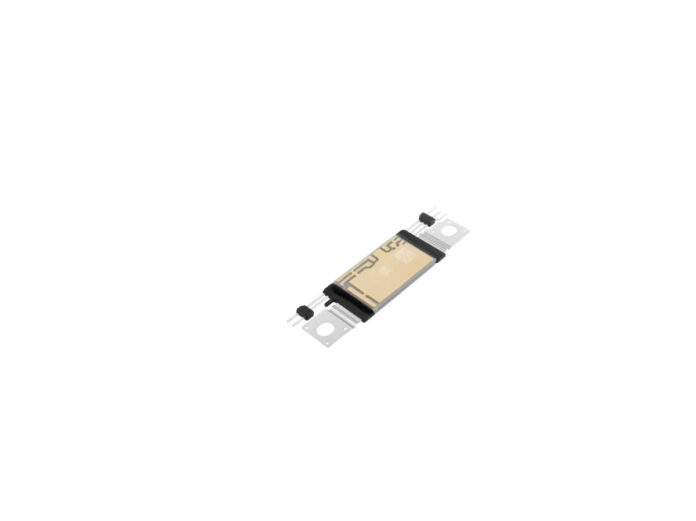The results of recent studies carried out by an international research group that includes the University of Oxford and Nottingham and the University of Pisa show that lithium metal solid-state batteries (Li-SSBs) grant a high energy density and, in the future, they might be used in electric vehicles, making them even more sustainable from the environmental point of view, revolutionizing the electric mobility and freeing it from the dependence on materials like cobalt and nickel.
Li-SSBs are distinct from other batteries because they replace the flammable liquid electrolyte in conventional batteries with a solid electrolyte and use lithium metal as the anode (negative electrode). The use of the solid electrolyte improves the safety, and the use of lithium metal means more energy can be stored. The hindrance still present today concerns the scarce speed owing to the present catalysers.
«Progressing solid-state batteries with lithium metal anodes is one of the most important challenges facing the advancement of battery technologies. While lithium-ion batteries of today will continue to improve, research into solid-state batteries has the potential to be high-reward and a game-changer technology», said Dominic Melvin, a PhD student in the University of Oxford’s Department of Materials, one of the co-lead authors of the study.
The research pursues the creation of new classes of catalysers and the use of different materials versus the ones used until now.
What potential of lithium metal solid-state batteries?
Fiap presents new stainless-steel synchronous motors
Fiap Spa – Pneumax Group has released on the market two new modes of stainless-steel synchronous electric motors. “Dertec fo Fpm3ss series stand out for hygiene and efficiency and feature a new Signature Line design that combines the last technologies to achieve the best efficiency and the utmost possible hygiene. These electric motors can also be equipped with encoders for the speed and position control”, the company explained. Electric stainless steel synchronous Ac Dertec Signature Line motors series SL4PSS have been developed with the target of improving efficiency, on average higher by about 10%. The current IE3 standard is expected to become more severe in the next future and electric stainless-steel synchronous motors Dertec Signature Line already conform to the foreseen IE4/IE5 standards. Moreover, they offer a high Cos Phi on almost the whole power range. The synchronous operation makes these electric stainless steel motors ideal for the speed and position control.
BorgWarner and onsemi, strategies in inverters for higher performances
BorgWarner will integrate 1200 and 750 V power devices of EliteSiC series by onsemi in its own Viper power modules for traction inverters, specifically ideated to enhance electric vehicles’ performances. The collaboration between the two players was born just for silicon carbide devices (SiC): the signed agreement – the companies announce – will generate profits exceeding one billion Euros in the lapse of its own duration. onsemi supplies the products of high-performance EliteSiC range assuring the high standards, in terms of quality, reliability and supply continuity demanded by the market of traction for electric vehicles.
“onsemi’s strategy that provides for unceasing investments aimed at increasing the manufacturing capacity of SiC devices by exploiting its own end-to-end supply chain – underlined Stefan Demmerle, vice president of BorgWarner and President and General Manager of the PowerDrive Systems division – grants us the possibility of going on supporting the steeply rising demand for our solutions, both now and in the future”.
Silicon carbide traction inverters by BorgWarner already at present grant more efficiency, higher cooling performances and faster recharge speeds. Thanks to the use of EliteSic technology, the solutions by BorgWarner will be characterized by even higher power density and efficiency levels, with consequent increment of both the autonomy and the overall performances of electric vehicles.
“The integration of EliteSic technology into traction inverters allows increasing electric vehicles’ energy efficiency – affirmed Simon Keeton, Executive Vice President and General Manager of the Power Solutions Group of onsemi – contributing to mitigating the fuelling anxiety, one of the major hindrances to the adoption of electric vehicles.
Solaredge releases on the market bi-directional battery chargers for electric vehicles
The sale of the first models is expected by the second half of 2024.
The Israeli manufacturer of inverters and batteries SolarEdge has unveiled a bi-directional DC-coupled electric vehicle charger for electric motors. The DC-coupled architecture of the device allows the simultaneous charging of electric vehicles directly from photovoltaic systems, from residential batteries and from the grid.
The battery charger is connected with a single-phase or three-phase inverter by a DC bus circuit that can be oversized up to 200%, permitting to recharge the electric vehicle with the photovoltaic energy in excess. The battery charger has a charge/discharge speed of 12/24 kW and a DC to DC 99% peak efficiency. The sizes of the device are 620 mm x 340 mm x 200 mm, it weighs 22 kg and is provided with a 7-metre cable. It can operate at temperatures included between -30 C and 50 C is equipped with an envelope classified IP-65 for internal and external use.
V2G applications allow automatically charging and discharging electric vehicles’ battery according to the dynamic prices of utilities. This permits house owners to receive payments by their electricity provider by discharging the energy of electric vehicles’ battery stored in the net during events of response to the demand.
Moreover, users can use the electric vehicle’s battery to carry out the backup of their dwellings when the vehicle is parked by using a V2H application. The battery has a maximum capacity of 50 kWh.
“The battery charger will be compatible with both powertrains for electric vehicles featuring 400 V and 800 V through a CSS standard connector”, stated Solar Edge in a note.
Hypercar, from Helix a low-inductance 650kW continuous-power motor
X-Division SPX177 is the most powerful motor for BEV electric vehicles ever manufactured by the British company Helix, famous for its package that they define Scalable Core Technology (SCT). With a weight of just 28 kg and a constant power of 650 kW, this motor will equip a hypercar by a manufacturer not revealed, yet. «It’s small and weighs just 41kg, including the 13kg inverter. It is a 2x 3-phase motor, so its current is shared across two inverters, a necessary approach to meet the phase current demands at ‘normal’ DC voltages at this extremely high-power level. Both the motor and inverter have extremely high-power density. Six high-voltage cables connect the inverter to the motor, while an LV connector carries the various control signals», affirmed the project manager Derek Jordanou-Bailey, head engineer of Helix. He added that the motor uses the ‘top end’ of materials.
The Electric Wave solution to convert boats
Converting conventional boats with thermal engines into electric or hybrid ones is the goal of the Electric Wave startup, system integrator in Ancona for the electric boating, operating in the development of a port charge network with a circular nautical zero-emission approach.
The company has implemented a demo boat, EW01, full electric: an 8.5 metre long goiter, with a 15 kW Bellmarine motor provided with photovoltaic awning with Sunerg modules with bifacial cells and with a power of 1 kWp. The vessel is available for potential owners interested in the advantages of silence, comfort and sustainability, which implies that this electric boat travels at a speed of 5 knots. In a sunny day, the boat has an autonomy of over 6 hours in full electric modality, which can be extended to 20h by using the suitable Range Extender kit in hybrid modality.
Tailored motors for electro-spindle application
Motorlift, Lodi producer of customized electric motors, has manufactured a permanent-magnet synchronous motor for electro-spindle upon specific demand for an application with high acceleration to reduce cycle times. In the specific case, the motor will equip a linear transfer machine tool, characterized by a cycle time of just 2.5 seconds.
The motor has a power of 5 kW and the carbon band ensures the rotor structure to reach the declared performances.
“Today more than ever, the attention focuses on energy consumption and environmental sustainability and therefore particular care has been paid to the electric sizing, to maintain efficiencies exceeding 93% and power factors in the order of 0.95”, Motorlift explained.
In a more recent note, the company said the customer asked for the design and development of a custom motor typology, with the delivery of the first batch within 10 weeks since the design approval occurred due to the design through Altair software, the characterization and final test at the test bench and the in-house implementations of the various mechanical finishing operations of rotor and stator.
Henkel, new technology for EV battery systems
Henkel launches a new injectable thermally conductive adhesive for EV battery systems in order to solve the challenges of OEMs and battery manufacturers. The new adhesive – Loctite TLB 9300 APSi – provides both structural bonding, as well as thermal conductivity in the battery system. The breakthrough product has already been adopted by one of the world’s largest EV battery manufacturers.
Designed for applications such as bonding battery cells to modules, or bonding cells directly to cooling systems, Loctite TLB 9300 APSi is a two-component polyurethane thermally conductive adhesive with a high thermal conductivity of 3 W/mK, moderate viscosity, and self-levelling characteristics. In addition to its heat management properties, it delivers a unique combination of good electrical insulation with high bonding performance to a variety of substrates. As a solvent-free solution that cures at room temperature without the need for additional energy consumption, it helps customers advance their sustainability agenda by reducing emissions and resource use, while also ensuring safer working environments.
Cylinders and suspensions: the choice of Ferrari Purosangue
TrueActive™ Spool Valve (TASV) technology by Multimatic comes into play by revolutionizing the role of shock absorbers, transforming a passive suspension into a completely active system.
Multimatic TASV shock absorber is pioneer to integrate a unique liquid cooled 48V three-phase brushless electric motor to deliver supplemental force through a bespoke twin-lead ball screw and gearbox assembly into the damper shaft and to the vehicle.
Each actuator group of the TASV shock absorber receives direct controls from a controller of the vehicle dynamics that constantly optimizes the vehicle’s performances and passengers’ drive comfort, far beyond what is possible with adaptive and semi-adaptive suspensions.
Alessandro Formenti, CEO at Vega Cylinders Company commented, complimenting on the choice of Ferrari Purosangue: “Imagine to drive your car without perceiving how you are moving. No longer feeling motor accelerations or pitching when cornering. It seems unbelievable, isn’t it? It seems a very distant choice from the sport driving. However it is the choice Ferrari made by installing some suspensions that annul drive sensations. These active suspensions have an electric 48V motor inside, connected with a special computer that reacts to the car’s stresses. Ferrari affirms this system helps fight load transfers and body movement, almost eliminating lateral body roll and shifting and distributing the load across the tyres. #Purosangue does not need anti-roll bars”.
Fpt Industrial will manufacture electric axles for Maserati
Fpt Industrial, brand of Iveco Group and Maserati, have established a partnership for the manufacturing of the new Gran Turismo Folgore, the first full-electric car in the Trident’s history.
Electric axles are manufactured in the ePowertrain factory in Turin, the first carbon-neutral manufacturing site of Iveco Group. The new Gran Turismo Folgore by Maserati exploits the 800-V technology and it has been developed with forefront technical solutions deriving from the Formula E.
The car is equipped with three electric 300-KW permanent-magnet motors integrated into the front and rear Fpt Industrial electric axles able to develop a power of 761 HP. This powerful efficient system allows reaching a sensational acceleration from 0 to 100 km in 2.7 s and a peak speed of 325 km/h.
Jointly developed by Fpt Industrial and by Maserati, Fpt Industrial electric axles offer a power density at the highest levels. Axles are characterized by compact light design thanks to their structure fully made of aluminium.










